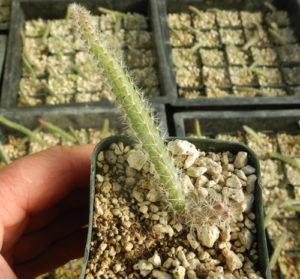Plants ordered now will ship Spring 2026 🙂
Spikenard, California (Aralia californica), potted plant, organic
$8.50
Family: Ginseng (Araliaceae)
Hardy to Zones 7 to 9
(Elk Clover, California Ginseng, Aralia californica, Western Spikenard)
This is the largest herbaceous member of its family that occurs here in the US. The root, aromatic and dripping with sticky white oleoresin, is the part normally used, and it has a long history of effectiveness in treating upper respiratory complaints and as a partus preperatur in childbirth. The plant gives great strength to weakened parts (and weakened people). Preferring to grow near rushing streams in the part shade, California spikenard is nonetheless sufficiently robust and adaptable to be grown in regular garden conditions–it is probably the most forgiving, adaptable and easily grown of the “ginsengs.” Sow outdoors in cool, moist shade in the fall for germination in the spring. Alternatively, give 90 days refrigeration in moist potting soil in a plastic bag or jar and then plant outdoors in cool, moist shade. The plant is fast-growing and does well in rich soils in the part shade. It can even be container grown, although of course it doesn’t get as big if you restrict root development. Basically I’m in love with these and you can get a lot more information about California spikenard by reading my book “Making Plant Medicine.” Space plants 3 feet apart.
Potted plant, certified organically grown









chinh luong –
hi, i live in zone 6b, if i grow them and cover in winter, do they survive, or i mean do they die back in winter like aralia racemosa?
Upvote if this was helpful (0) Downvote if this was not helpful (0) Watch Unwatch Flag for removal
Richo Cech –
Hello Chinh, Thanks for writing. If you click on the photo you get the monograph which gives you this kind of info. Aralia cal is listed from zone 7 to 9 so it may not survive in a zone 6. Yes, mulching during winter dormancy can certainly help. This kind of plant is known as an herbaceous perennial. That means it shows itself from a permanent root in the spring and in the fall senesces back down to that same root again. You can find out more about this and other really cool ginseng family plants in “Growing Plant Medicine Vol 1.” All the best, richo
Upvote if this was helpful (0) Downvote if this was not helpful (0) Flag for removal
Gerrie Margell –
Hi there, do you know if these are deer delicious? I’m wondering if I should keep them inside the fence or if out might be safe?
Upvote if this was helpful (1) Downvote if this was not helpful (0) Watch Unwatch Flag for removal
Richo Cech –
Hi Gerrie, I have a nice population of these growing down by the creek where there are many deer, and the deer don’t bother them. I suppose if you put one in a room with a deer and there was nothing else to eat, then the deer would eat it, but it is well down on their preferred browsing list. Deer like stuff that is mucilaginous and sweet. Spikenard is more on the saponin side of things. Richo
Upvote if this was helpful (1) Downvote if this was not helpful (0) Flag for removal